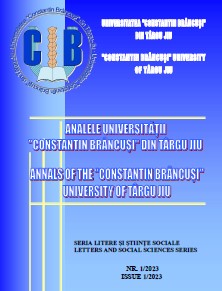ROMANIA’S DEVELOPMENT. AN INSTITUTIONAL ANALYSIS BETWEEN THE COMMUNIST AND THE POST 1989 REGIMES
ROMANIA’S DEVELOPMENT. AN INSTITUTIONAL ANALYSIS BETWEEN THE COMMUNIST AND THE POST 1989 REGIMES
Author(s): Adrian Eugen PredaSubject(s): National Economy, Political history, Economic policy, Government/Political systems, Comparative politics, Post-War period (1950 - 1989), Transformation Period (1990 - 2010), History of Communism
Published by: Editura Academica Brancusi
Keywords: Institutions; economic institutions; political institutions;
Summary/Abstract: This paper examines the great economic difference in terms of GDP evolution in Romania since 1989, when the communist regime collapsed, with the aim to answer the research question related to this great economic difference. In 1989 Romania had a GDP of $41.45 bln. Compared with $301.26 bln. In 2022, while the aim of this paper is to answer the question of “why is such a difference?” based on the theoretical framework provided by the new institutional economics, in the perspective delivered by Daron Acemoglu and James A. Robinson, my answer to the research question, which represents the paper hypothesis, is that the post 1989 development of Romania was driven by adopting inclusive economic and political institutions.
Journal: Analele Universitatii „Constantin Brancusi” din Targu Jiu – Seria Litere si Stiinte Sociale
- Issue Year: 2023
- Issue No: 01
- Page Range: 81-87
- Page Count: 7
- Language: English

